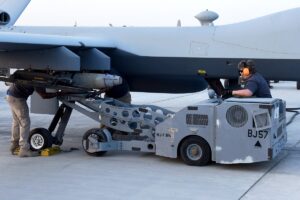
U.S. Central Command's (CENTCOM) fiscal 2024 wish list points to what the National Geospatial Intelligence Agency (NGA) has said is a primary longer term goal of artificial intelligence (AI)--the prediction of adversary behaviors that a human analyst may not have envisioned. The CENTCOM fiscal 2024 wish tabulation--one of a number of DoD's incongruously named "unfunded priority lists" (UPLs)--includes $34 million for Palantir Technologies' [PLTR] Maven Smart System (MSS). An Arlington, Va., watchdog group, Taxpayers for Common Sense, posted the CENTCOM…














